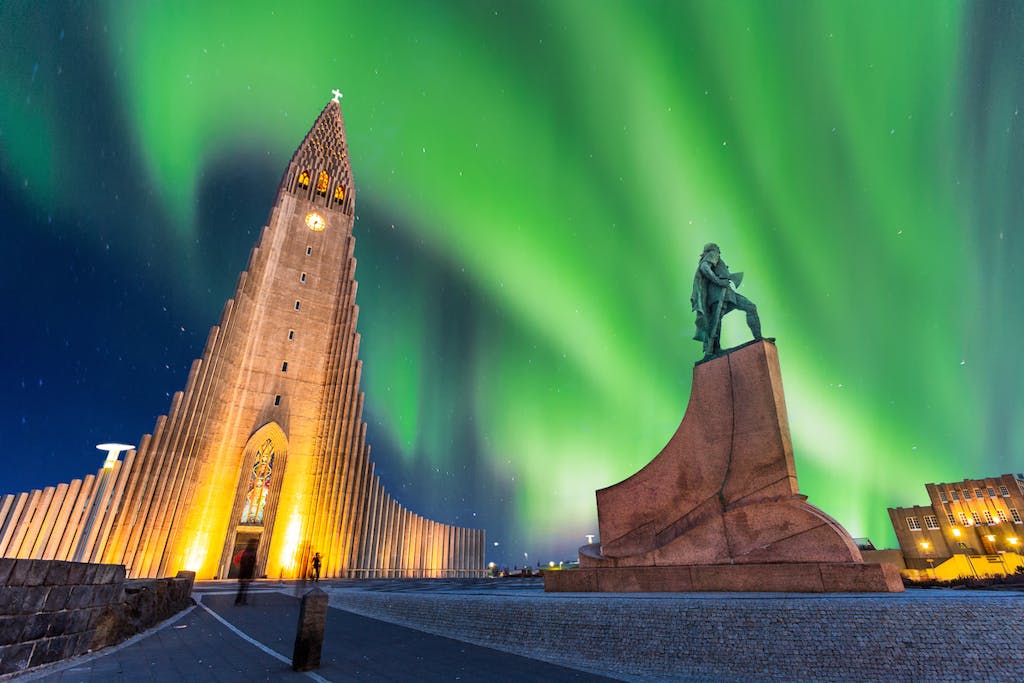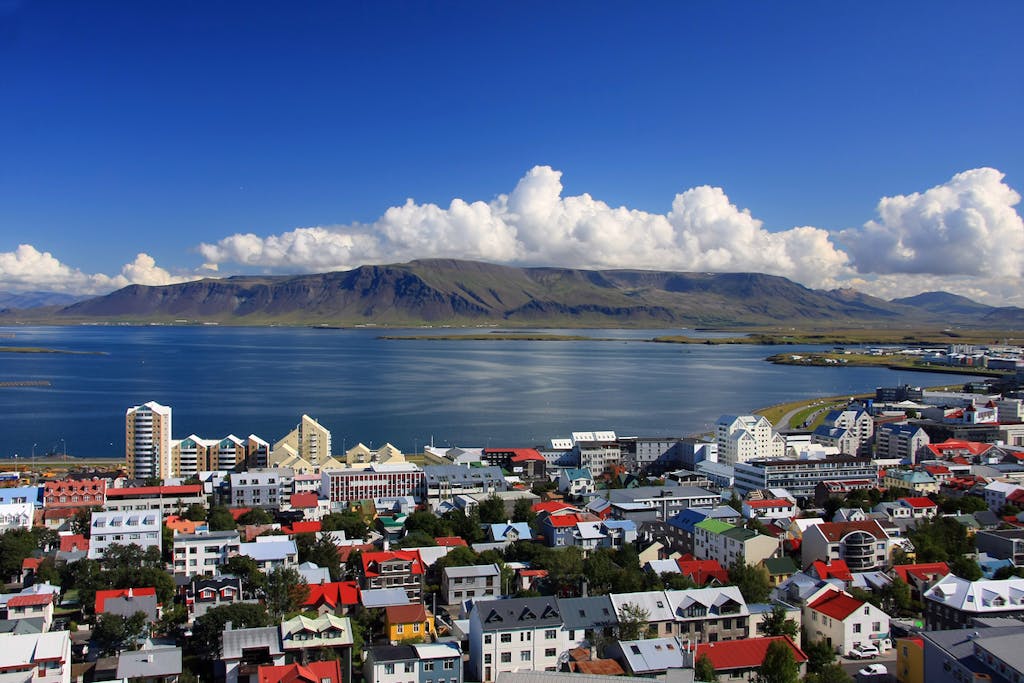Things to Do in Reykjavík: Outdoor Adventure Abounds in the Icelandic Capital
Every breath feels cool and clean. The fresh air is the first thing I notice when I return to Reykjavík. Walking through the quiet stillness of the early-morning hours, one of my favorite things to do in Reykjavík, the bright streets always seem newly washed after the recent rain. Sometimes the fog creeps in, making a mystery of the Icelandic metropolis. Five minutes pass — or maybe five hours — but then a sudden surprising sunburst reveals square rows of bright rooftops painted red, blue, and green.
Laid out over a lengthy peninsula in southwest Iceland, Reykjavík is a civilized little capital wedged neatly between the enormous Atlantic and the boisterous heat of the underworld. More than a thousand years ago, the first Nordic settlers named the area “Smoky Bay” for the constant steam that still pours up from the volcanic landscape. As one of the most active geothermal hotspots on earth, Reykjavík remains cozy and warm — despite the maritime fluctuations of weather.
Weather is part of the adventure
“If the weather’s nice,” may be the visitors’ mantra in Reykjavík, but I’ve learned to listen to those who call the city home. Icelanders are a rugged and resilient people for whom weather is merely part of the adventure. After visiting more times than I can count, I’ve come to trust my Icelandic friends when they insist that as long as I’ve got something warm and waterproof, the city of Reykjavík is open. On my Iceland vacations, I think it’s sin to come all the way to the capital and then sit indoors — or worse, jump on a tour bus for a day-long sightseeing trip to elsewhere.
A delightful destination in its own right, Reykjavík favors those who favor personal discovery. Every street marks a story from past to present, starting with the name on the sign. Ingólfsstræti (“Ingólfur’s Street”) points to Ingólfur Arnason, who founded Reykjavík in 874 A.D. His statue stands atop the center most hilltop in the city, while an even larger statue of Leif Ericsson stands in front of the avant-garde cathedral Hallgrímskirkja, looking down Skólavörðustigur (pronounced sko-la-vur-thu-stee-gur). The mouthful of a street name commemorates the schoolboys of centuries past who used to stack piles of stones to mark the way into the old city. Today, the steep and narrow lane offers some of the best window-shopping in the city, celebrating the eclectic work of Icelandic artists and designers.

Things to do in Reykjavík
Keep walking and more sculptures appear. Reykjavík boasts three individual sculpture gardens dedicated to individual Icelandic sculptors, but the city’s signature piece stands poetically at the shore’s edge on Sæbraut (“Sea Way”). Created by Jón Gunnar Árnason, Sólfar (“Sun Voyager”) is a contemporary steel outline of the kind of Viking ship that carried the first humans from Norway to Iceland.
The Sun Voyager is an excellent starting point from which to explore the rest of Reykjavík, with a paved path that follows the seafront for miles in either direction. Heading west leads to the historic harbor, where robust fishing vessels float in dock and whale-watching expeditions head out to sea in search of close encounters with Iceland’s largest creatures. Another mile takes you to Seltjarnarnes — the end of the capital peninsula and home to Grótta Island lighthouse, renowned as the best spot in town for glimpsing the aurora borealis. In daylight, this is the best view of Bessastaðir, the official red-and-white residence of Iceland’s president.
Following the eastern shoreline leads to Viðey, the largest and most accessible of the bay islands. A brief ferry ride from the mainland, the 18th-century estate offers a realistic foray into Reykjavík’s past with its restored farm and country church. The long and grassy island is a popular birdwatching spot, as well as being home to Yoko Ono’s peace column, or Friðarsúlan, a light sculpture that commemorates Iceland as the most peaceful country in the world.
The imposing rock ridge that looms in the background is Mount Esja — just a quick bus or taxi ride from the city. A moderate hike to the top takes less than the two hours and offers my favorite panorama of the whole Reykjavík, revealing where the capital ends and Iceland’s trued wilderness begins.

Surprises await
A surprise to some, Reykjavík is an excellent city for cycling, with well-maintained bike paths that connect the entire capital area. Joining an organized bike tour or grabbing one the city’s free bikes makes the city feel even smaller and more accessible.
Another big surprise is that Reykjavík’s most popular pastime is swimming — in the open air. Despite the occasional rain, snow, or horizontal sleet, the capital region boasts nearly 20 public pools, all heated by geothermal springs. Combined with gushing steam baths and lovely natural hot tubs, the swimming pool is the local gathering place of friends and family. Right in the city center, my favorite swimming spot it Sundhöllin — an art deco masterpiece designed by Iceland’s native architect, Guðjón Samúelsson.
For a slightly brisker dip, Nauthólsvík is Reykjavík’s public warm-water beach, where naturally-heated water is pumped right into the sea. For a hotter and more languorous soak, check out the all-new Sky Lagoon, a geothermal spa in suburban Kópavogur specializing in finding wellness in nature. There is something lovely and surreal about lounging outside and feeling the powerful warmth of Iceland’s big and volcanic nature. Indeed, breathing in the clean air bathing outdoors while offers an excellent insight into why humans have survived here at the top of the world for the last 1,100 years.
Ready to learn about Iceland vacations? Read more here.
